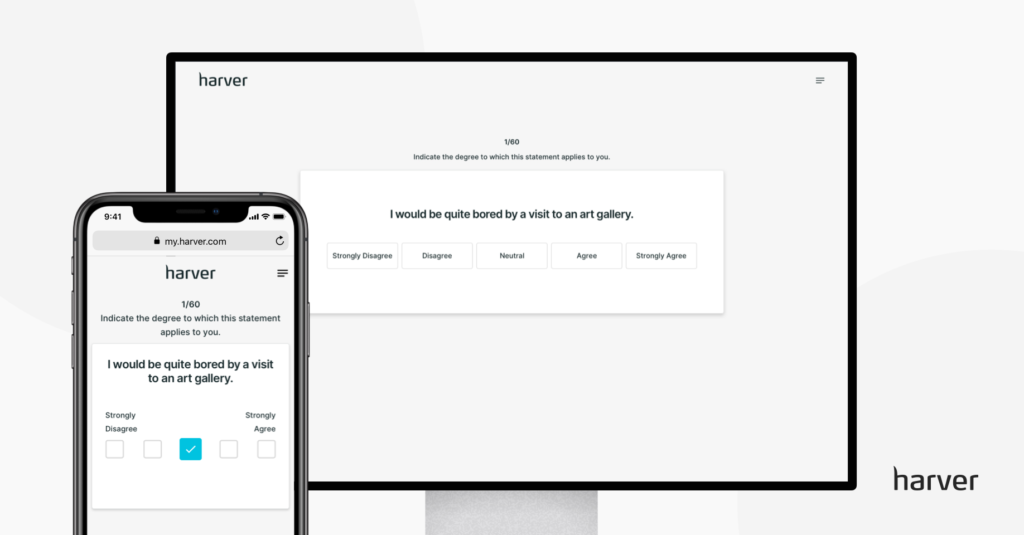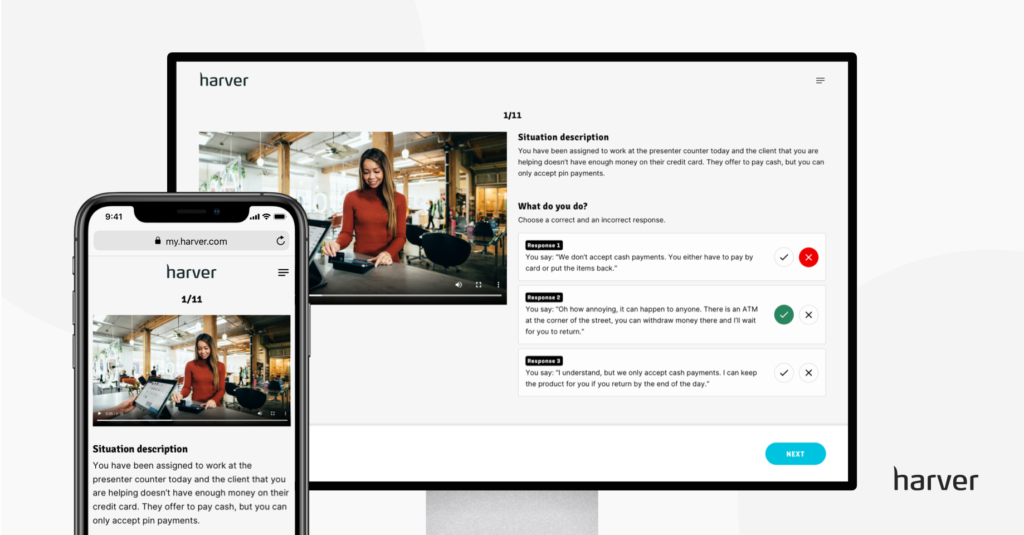There’s no doubt about it: making bad hires is expensive. According to Career Builder, companies lose an average of $15,000 per bad hire a year thanks to replacement hire costs, company downtime while a position is vacant, and other expenses that crop up.
With numbers like this, it’s clear that the cost of a bad hire is significant—and so are the long-term effects. Making a bad hire not only costs companies a lot of money, but also has a significant negative impact on team productivity and morale.
“It’s important to note that there’s a ripple effect with bad hires. Disengagement is contagious — poor performers lower the bar for other workers on their teams, and their bad habits spread throughout the organization. The best thing hiring managers can do is put in the time and effort on the front end to make sure they have the best available pool of applicants for every job opening.” –Rosemary Haefner, Chief HR Officer, CareerBuilder
What is pre-employment testing, and how can it help you improve your quality of hire, retain top talent, and save both time and money during the recruitment process? Let’s dive in!
What’s in?
Like what you see?
Don’t miss out. Subscribe to our quarterly digest to get the latest TA and TM resources delivered right to your inbox.
What is pre-employment testing?
Resumes alone are just not reliable enough to provide recruiters with the insights they need to ensure candidates are a good fit for the role and company alike. In fact, 87% of employers believe that some candidates misrepresent themselves on job applications and/or resumes. To avoid the risks associated with these misrepresentations, employers today are tasked with finding ways to ensure the information they receive is accurate.
Pre-employment tests are a series of different assessment tools that recruiters use to screen potential candidates and find the best match for their organization. By implementing pre-employment assessments, you can gather relevant, reliable job-related information on candidates in a way that is as objective as possible. Most pre-employment testing is completed online, with assessments available in many different shapes and sizes.
The different types of pre-employment tests
Here are some of the different types of pre-employment tests that employers can implement to assess applicants for open roles with their organization:
Job knowledge tests: Employers opt to conduct job knowledge testing when applicants must possess a certain degree of knowledge on the specific subject matter prior to starting a new role.
Personality questionnaires: These questionnaires assess personality traits to help employers get a comprehensive picture of a candidate’s character. Personality tests typically measure things like extraversion, assertiveness, and other personal qualities.

Culture fit assessments: Such assessments usually compare a candidate’s preference for organizational culture with the actual culture at an organization they’re applying for. This helps companies understand how an applicant’s values align with the organizational values.
Cognitive ability assessments: These tests help estimate each applicant’s ability to use mental processes by assessing important cognitive skills like logical, verbal, and numerical reasoning.
Soft skills assessments: Soft skills are the non-technical skills needed to perform a job, like good communication, problem-solving, teamwork, and integrity. Recruiters can assess candidates and hire those who possess the right soft skills if the job-specific tasks can be learned over time.
Hard skills assessments: Some jobs require candidates to possess specific hard skills to qualify for an open position. Typing speed, proficiency in a foreign language, and computer programming are examples of hard skills at work.
Situational judgment tests: Situational judgment tests present candidates with different scenarios that they might experience in the job they’re applying for. They’re designed to assess how well candidates prioritize, follow the instructions, and handle stressful situations in the workplace.

Other pre-employment tests: There are also a few other types of pre-employment tests. For example, some companies require drug testing as part of pre-employment screening, while others require physical ability tests.
Key benefits of pre-employment testing
Recruiters experience a ton of benefits when they take advantage of pre-employment assessments to screen job candidates. Some of the most significant benefits are:
Streamlining the recruitment process
One of the most recognizable benefits of pre-employment testing is driving increased efficiency in the recruitment process. With the help of the right screening software, recruiters can gather a lot of information about a lot of job candidates in a much shorter period of time than it takes to manually sift through resumes.
Improving your quality of hire
Pre-employment testing helps companies hire candidates who are best suited for both the job and the organization. This is not only good news for the hiring manager but also leads to a much better quality of hire overall.
Not sure how your quality of hire measures up? Here’s everything you need to know!
Eliminating common hiring bias
Unconscious bias is a big problem in recruitment, and recruiters are tasked with finding ways to minimize it. Pre-employment testing helps to eliminate hiring bias by narrowing down candidates based on relevant factors like skills and personality traits rather than background or demographic alone.
Stop guessing,
Start data-driven hiring.
Learn how you implement a modern candidate selection process, that is: streamlined, experience-driven and backed by data.

Improving legal defensibility of your hiring decisions
Because pre-employment assessments are based on objective factors, they also help increase the legal defensibility of your hiring decisions. Using assessment software ensures that the process and criteria remain consistent during the entire hiring phase. However, it’s important to note that pre-employment tests can only improve legal defensibility when tests measure skills and traits that are related to the job they’re applying for.
Decreasing employee turnover
Turnover is a costly problem for employers, who are always on the lookout for ways to decrease it and retain their top talent. The best way to decrease employee turnover is to hire people who truly match the job and the company—which is where pre-employment assessments can be especially useful.
Improving the candidate experience
Believe it or not, pre-employment tests can benefit candidates as well! They allow job seekers to gain insights into the company they’re interested in, while learning something about themselves in the process. This enhances the candidate experience and ensures they end up in a job where they are a perfect fit.
Pre-employment testing best practices
If you’re thinking about working pre-employment testing into your recruiting process, there are a few best practices you should keep in mind to help make the most out of it.
1. Research your vendor options
One of the most important steps you can take to kickoff pre-employment testing at your organization is to do your research on the different vendors that are available to you. There are a number of different vendors out there that offer different types of pre-employment testing in various formats. Learn about the services they offer and ask relevant questions, such as:
- What kind of pre-employment tests do they provide?
- Are the vendor’s tests customizable?
- How is the vendor’s onboarding process?
- What is the vendor’s reputation in the space?
- What level of customer support is available?
By asking these questions and learning as much as you can about the software you’re thinking about investing in, you can rest assured that you’ll end up choosing the best tool to meet your business needs.
2. Ensure the validity of your test data
There are many different validity measures used to validate the data in pre-employment tests.
For example, an assessment demonstrates content when the criteria it’s measuring align with the job description and performance. Or a pre-employment test demonstrates criterion-related validity when the results can be used to predict job performance. This requires assessment scores to be statistically evaluated and measured against employee performance.
Lastly, pre-employment tests can also demonstrate something called construct validity, which is evaluated by comparing the results to a similar test assessing the same psychological construct, like integrity or intelligence.
3. Implement testing responsibly
Test selection is key when you’re implementing pre-employment testing. It’s important that you choose the most appropriate for measuring relevant skills and characteristics for the job in question to be sure they’re predictive for on-the-job success. Choosing an ill-fitting test can lead to ineffective results that will not be helpful for candidate selection.
You also want to be sure to conduct an appropriate amount of testing. Studies have shown that tests conducted in 40 minutes or less have a 75% completion rate. On the other hand, tests that go from 41 minutes to one hour have only a 66% completion rate. By limiting tests to 40 minutes or less, you can decrease the number of candidates who fail to complete the process due to time requirements.
4. Align your pre-employment testing with your brand
It’s always a good idea to align your pre-employment tests with your brand by customizing them as much as possible. By using pre-employment testing software that has customization features, you can showcase your brand in more ways than one. For example, you can upload your company’s logo or implement your color scheme to maintain branding consistency with your website and social channels.
Some companies add team photos or videos to the assessment to make it a more interactive experience. Taking these steps not only enhances the pre-employment testing process for candidates but also gives them a sneak peek into the company culture and the job that they’re applying for.
5. Test during the right part of the recruitment process
Once you have a test prepared, you’ll have to decide at which stage of the hiring funnel you’ll test applicants. Testing candidates early on in the process is an efficient way to gather objective data before making any important hiring decisions. While it varies from company to company, a study revealed that 40% of respondents conducted testing after the initial resume screening.
If you have a large volume of candidates, you might even want to make the pre-employment testing a part of your application. While some companies are hesitant to test early on in the hiring process—which primarily happens when the testing software charges companies on a per-test basis—there are a lot of benefits to taking that approach. It allows recruiters to shortlist candidates early on in the process, ensuring they meet the minimum requirements before moving forward with interviews.
6. Track your pre-employment testing completion rates
It’s also a good idea to track your testing completion rates to assess when and where candidates drop off. This will allow you to think about what steps you can take to improve on the process, like changing the order of your pre-hire assessments or making them shorter. By tracking completion rates, you can optimize the process and improve it to make your pre-employment testing even more useful over time.
7. Use the test results as guidance
Keep in mind that pre-hire assessments are not meant to be an ultimate decision-making tool; they’re only meant to help guide you when making your decision. Don’t rely solely on candidate test results to make the choice for you. Instead, combine your pre-employment testing with other candidate selection methods such as job interviews, test assignments, or trial days to be sure you’re making a fully informed, objective decision.
Over to you
When implemented, administered, and evaluated well, pre-employment testing can be an immense help in your hiring process. You can get started by exploring different kinds of tests and finding out which ones are relevant to the jobs you’re hiring for. Sticking to best practices of pre-employment testing will ensure that you get the best results—and ultimately the very best candidates for your business.
Stop guessing,
Start data-driven hiring.
Learn how you implement a modern candidate selection process, that is: streamlined, experience-driven and backed by data.


